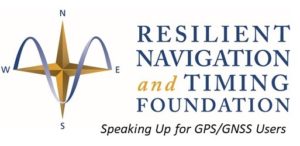Image: Google driverless car – Grendelkhan on Wikimedia Commons

By Editor
When the Israeli company Regulus used GPS spoofing to cause a Tesla in self-drive mode to turn sharply and quickly brake, it demonstrated what many in the PNT community had long known or suspected. GNSS signals and receivers provide paths and surfaces for cyber intrusion into self-driving systems.
Trust in these systems is crucial to user adoption, not to mention governmental approval for implementation.
And, while the safety of individual drivers is paramount, location integrity is also a critical component of much more efficient and effective future surface transportation systems. Whether described as “connected vehicles,” “intelligent transportation systems,” or some other catch phrase, the idea is to manage traffic flows so as to minimize the distances, time, and fuel for each trip.
Imagine two cars approaching an intersection at about the same time. Today the safety of the vehicles would likely be managed by stop signs or a traffic light. One or both of the vehicles would have to slow, stop, and wait to help prevent a collision. With connected cars in an intelligent transportation system, both vehicles would know the exact location, direction, and speed of the other. Together the cars would adjust their speeds to arrive at the intersection at slightly different times. No stop or delay, and no collision.
Zenzic, the organization dedicated to “accelerating the self-driving revolution in the United Kingdom,” has awarded £1.2 million in a competition focused on cyber security in self-driving vehicles. The UK’s Centre for Connected and Autonomous Vehicles (CCAV) and Innovate UK organizations have provided funding and sponsorship.
According to Zenzic, cyber resilience is the most significant technical challenge to be solved before the UK can benefit from self-driving vehicles on public roads.
Among the award recipients is GNSS company Spirent (full disclosure – Spirent is a corporate member of the RNT Foundation). They will be working with the University of Warwick’s center for Vehicle Electrification and Connected and Autonomous Vehicles. Their objectives are to measure and maintain cyber-physical resilience and identify vulnerabilities. The ultimate goal is to support the creation and testing of cyber-physical and software architectures, best practice in design and lifetime management.
Steve Hickling, Spirent’s Director of Professional Services said: “GNSS has proved to be a fantastically successful system capable of providing highly accurate and precise navigation and timing data to enable many modern applications, including vehicle navigation. However, GNSS signals received on Earth are very weak and so are vulnerable to interference or spoofing which can leave key systems open to cyberattack. This project is very exciting for Spirent as it enables us to demonstrate techniques to evaluate the resilience of mitigation strategies. The findings from this project will lead to better engineered, more secure systems which will improve road safety.”
Spirent’s PNT Security Technologist, Guy Buesnel also believes that the project is an important milestone: “We spend a lot of time building awareness of the risks and impacts of real-world GNSS threats – during 2019 the number of real-world spoofing and GNSS interference related events increased dramatically, as did the impact on many unprotected systems. This project is a big step forward in helping us to understand quantitively the extent of the challenges for connected and autonomous vehicles and will allow us to develop the test frameworks methodologies and test equipment needed to safely assess and mitigate the risks.”


